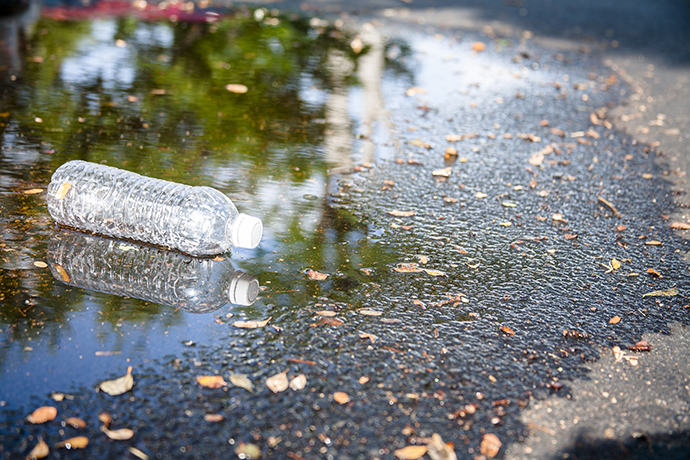
Note: This story has been updated following correspondence with the City of Plano. In the title, I removed the word “dumps,” which is explained in the text. Further corrections are in italics.
How much crap are we going to take from Plano, whose propensity for unleashing poo into White Rock Lake is all but unbounded? This, and the initial headline, is unfair. Steve Stoler the director of media relations for the City of Plano checked me on this:
“Plano is not ‘dumping’ raw sewage into White Rock Creek, Stoler says. “‘Dumping’ makes it sound as if the sewage spills are intentional, which certainly is not the case.”
This evening, even as Tic Tok-ers and Instagramers share suns setting over White Rock, 100,000 gallons of raw suburban sewage is making its way toward its deceptively reflective waters. It’s a tale as old as time — a line busted up in Plano, gallons of fetid fecal waste gush into the creek that flows into (what one who knows the whole story might dub) port-a-potty pond.
If you are a resident of East Dallas who is even the least bit informed, you know not to swim or so much as dip a toe in White Rock Lake. But your adorable pooches paddling off the dog park shore, though — I implore you, this weekend find Fido a body of water less awash in Plano poo.
It’s not all Plano’s fault — White Rock Lake is filthy, always, and the presence of untreated raw sewage and associated ampicillan and tetracycline-resistant microbesis is probably pretty persistent.
Still, you aren’t helping, Plano.
Thursday’s onslaught occurred after a tree struck an 18-inch line near Parker Road. Plano Public Works Department personnel worked all day to contain the spill. They cannot retract the horror. The City of Plano notified the Texas Commission on Environmental Quality regarding the spill, according to a news release.
Stoler clarifies, “The incident, which occurred yesterday, was an accident caused by Wednesday evening’s severe thunderstorm. We had a large amount of rainfall in a short period of time. We believe the rushing water in the creek took down the large tree, which fell onto the aerial sewage line breaking it. As with any leak or spill of raw sewage in Plano, City crews respond as quickly as possible to begin the cleanup process. If the spill enters a creek, those crews routinely walk along the creek searching for any debris, which if found, is immediately removed. They also search for signs of fish kills. In most cases, the sewage is quickly diluted by rushing waters of the creeks fueled by runoff/flooding.”
This has happened before — remember?
Stoler expounds, “You are correct in reporting we have had several sanitary sewer overflows in recent years. These overflows sometimes occur when we have significant rain events. The problems are the results of ‘inflow’ and ‘infiltration’ of rainwater. Inflow occurs when storm water flows into the sanitary sewage system through damaged system components and illegal connections such as yard drains or downspouts. Infiltration occurs when groundwater seeps into the sewage system through defects such as holes and cracks in manholes and sewer pipes.”
Sewer spill timeline:
April 2019: After heavy rains, sewage started overflowing from a manhole near Glen Eagles Golf Course and about 100,000 gallons traveled by way of a creek feeding into White Rock.
October 2018: 159,900 gallons of Plano wastewater surged into toilet tributary and flowed into White Rock Lake following a rainstorm.
June, 2018: An especially big one. A contractor busted a hole in a wastewater pipe in Plano near White Rock Creek and the George Bush Turnpike after which more than a million gallons of sewage flowed into White Rock.
Stoler adds, “However, sanitary sewer overflows are by no means isolated to Plano. Aging infrastructure presents similar challenges throughout North Texas, the state and across the country. While our sanitary sewer system is designed to handle some inflow and infiltration when it is excessive, the system’s capacity is exceeded, resulting in overflows.”
Though White Rock has not been used as a water source since the 1950s people still fish in it. A lot of people. I watched a guy catch a nice-sized catfish just last week. And now I am worried for that dude. I will absolutely let this stand.
The last times this happened, the Dallas Park and Recreation Department said residents should avoid water sports and report anything unusual, such as dead fish, to 3-1-1.
Stoler says, “The City has been steadfast in taking steps to correct the problem. We have an Inflow/Infiltration Reduction Program to identify and alleviate sources of infiltration and inflow. Crews conduct flow checks to identify pipes with a significant increase in flow during heavy rains. They also use cameras to inspect sewer pipes and identify cracks. We also use smoke and dye testing to identify sources of inflow and infiltration. When the City identifies these sources, repairs are completed as soon as possible.
In fact, under the Texas Commission on Environmental Quality Sanitary Sewer Overflow Initiative, we have taken the following [number of] corrective actions before there is harm to human health and safety or the environment.
2021 = 6
2020 = 3
2019 = 16
2018 = 32





